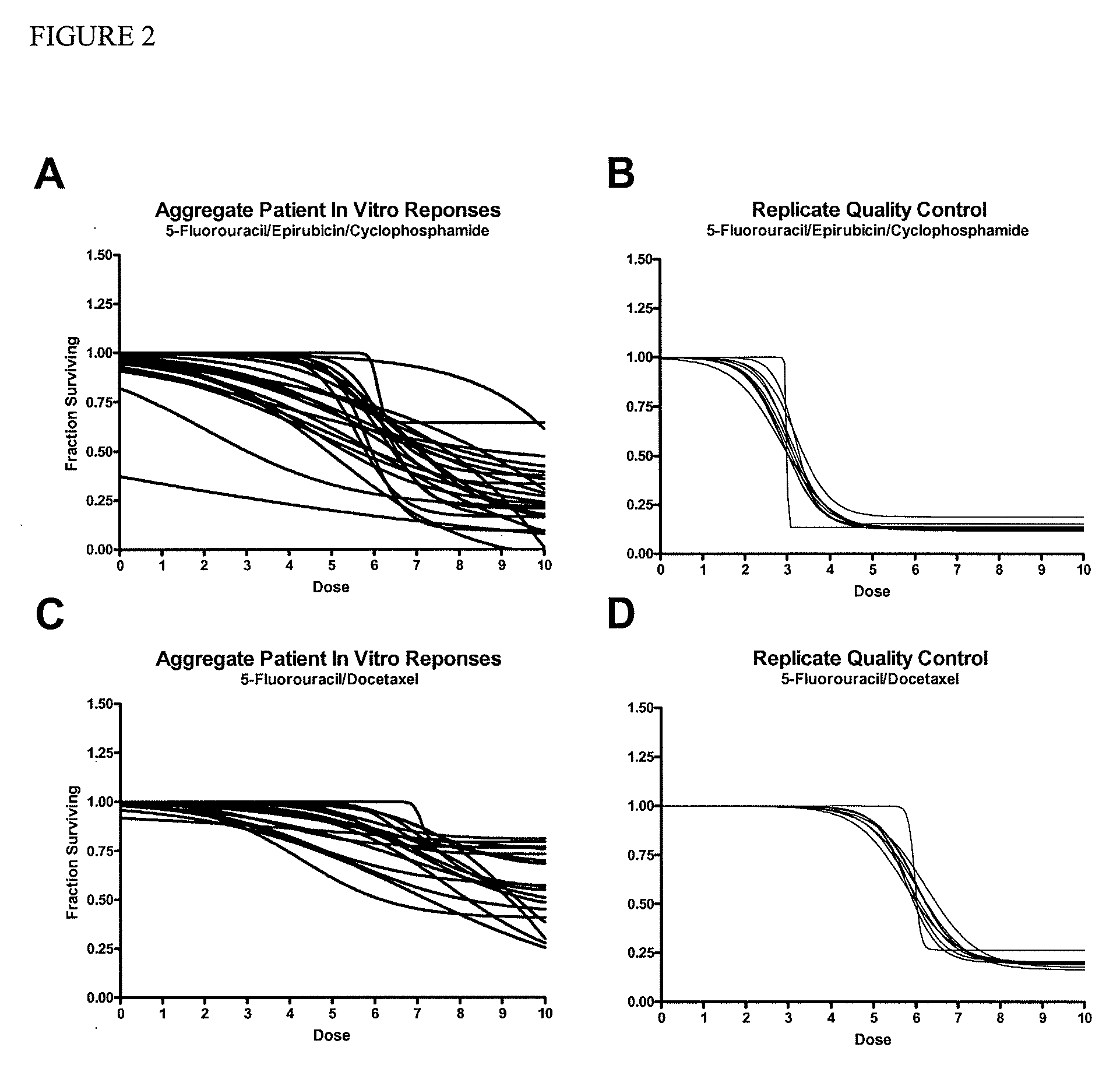Methods for selecting active agents for cancer treatment
- Summary
- Abstract
- Description
- Claims
- Application Information
AI Technical Summary
Benefits of technology
Problems solved by technology
Method used
Image
Examples
examples
Summary
[0043]Transcutaneous sampling of breast lesions was accomplished in two small feasibility studies of the MAMMOTOME® (n=14) and a routine core needle biopsy (n=14). In addition, 34 patients with node-positive breast cancer in the US Oncology 02-103 trial were analyzed. One to three cores from each tumor before treatment were received. In addition, on the samples received from the US Oncology 02-103 trial, the expanded tumor cells were tested for chemoresponse using a cell-based assay and scored as adjusted area under the curve (aAUC). Assay score and pathological complete response (pCR) were determined independently and in a blinded manner. Logistic regression models were fitted to select predictors for responsiveness.
[0044]Tumor cells were successfully isolated from 83.9% of the patients. The chemoresponse profiles of the subset of patients were robust and reproducible with coefficient of variance of less than 3%. In the initial outcome correlation, aAUC of docetaxel / fluorour...
PUM
 Login to View More
Login to View More Abstract
Description
Claims
Application Information
 Login to View More
Login to View More - R&D
- Intellectual Property
- Life Sciences
- Materials
- Tech Scout
- Unparalleled Data Quality
- Higher Quality Content
- 60% Fewer Hallucinations
Browse by: Latest US Patents, China's latest patents, Technical Efficacy Thesaurus, Application Domain, Technology Topic, Popular Technical Reports.
© 2025 PatSnap. All rights reserved.Legal|Privacy policy|Modern Slavery Act Transparency Statement|Sitemap|About US| Contact US: help@patsnap.com



